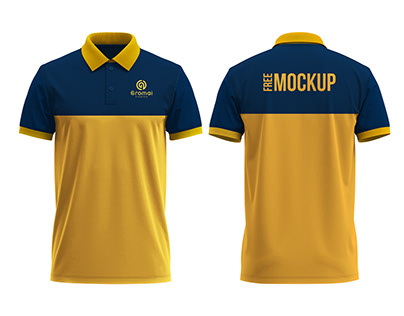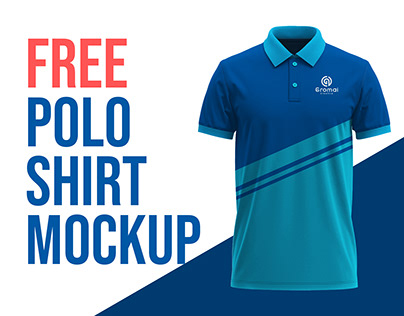The polo shirt. It’s a wardrobe staple for millions around the globe, effortlessly bridging the gap between casual comfort and smart-casual sophistication. From golf courses to corporate casual Fridays, school uniforms to high fashion runways, its iconic silhouette is instantly recognizable. But have you ever stopped to think about the journey of this ubiquitous garment? Beyond the fabric and the buttons, there's a rich history and a fascinating business story behind the companies that bring these shirts to life. Understanding the background of polo shirt making companies isn't just about tracing fabric; it's about exploring innovation, branding, and the evolution of modern apparel.
This article will take you on a journey through the origins, key players, manufacturing evolution, and business strategies that have shaped the polo shirt industry. We'll uncover how a simple sports garment transformed into a global fashion icon, and the enduring legacy of the companies that pioneered its production.
The Birth of an Icon: Where Did the Polo Shirt Come From?
To understand the companies, we first need to understand the product. The polo shirt, as we know it, wasn't born in a boardroom but on the tennis court. Before its invention, tennis players wore stiff, long-sleeved shirts that were impractical and uncomfortable for the rigorous demands of the sport. This discomfort sparked a revolutionary idea in the mind of one particular player.
The concept of a short-sleeved, breathable, collared shirt made from a loosely knitted cotton fabric was a game-changer. It allowed for greater freedom of movement and better ventilation, addressing the core issues of traditional sportswear. This innovation laid the groundwork for entire companies to form, dedicated to perfecting and popularizing this new style of shirt.
Early Pioneers and Their Vision
The polo shirt didn't just appear; it was meticulously designed and championed by visionary individuals who saw its potential. Their companies became synonymous with quality and style, setting the benchmark for generations to come.
René Lacoste: The Original Innovator
The story of the modern polo shirt truly begins with René Lacoste, the legendary French tennis player. Frustrated with the restrictive formal wear of the 1920s, Lacoste designed his own shirt: a short-sleesleeved, soft, unstarched collar, made from a breathable piqué cotton knit. This design allowed him to move freely and stay cool during matches. In 1933, he founded "La Chemise Lacoste" with André Gillier, a major French knitwear manufacturer. Their mission was to produce these revolutionary tennis shirts for the public. The iconic crocodile logo, inspired by Lacoste's nickname "The Crocodile," became one of the first visible brand logos on a garment, symbolizing quality and athletic prowess. Lacoste's company didn't just sell a shirt; it sold a piece of sporting history and innovative comfort, establishing a direct lineage to the modern polo shirt manufacturing industry.
Ralph Lauren: Elevating the Polo to a Lifestyle
While Lacoste invented the shirt, Ralph Lauren elevated it to an American lifestyle symbol. In 1967, Ralph Lauren founded his company, initially selling ties. However, it was his "Polo Ralph Lauren" line, launched in 1972, that cemented his brand's place in fashion history. Lauren didn't invent the polo shirt, but he reimagined it. He took the classic sportswear item and transformed it into a symbol of aspirational, preppy American style. His polos were offered in a vast array of colors, made with high-quality fabrics, and featured the now-famous polo player logo. Ralph Lauren's genius lay in his ability to create an entire world around the shirt – a world of sophistication, sport, and timeless elegance. His company's background is rooted in storytelling and brand building, turning a simple garment into a statement of identity and status.
Fred Perry: The British Counterpart
Across the Channel, another tennis legend, Fred Perry, was making his mark. A three-time Wimbledon champion, Perry launched his own brand in 1952. His company's polo shirt, featuring the distinctive laurel wreath logo, quickly became a staple. While similar in design to Lacoste's, Fred Perry's polo developed its own unique identity, particularly through its association with various British subcultures like mods, skinheads, and punks. This connection gave the Fred Perry polo a rebellious edge and a street credibility that differed from its more elite counterparts. The company's background highlights how a brand can evolve beyond its sporting roots to become a cultural icon, demonstrating versatility in market appeal and design.
The Evolution of Manufacturing and Materials
The journey from a single shirt to millions produced globally involved significant advancements in manufacturing processes and material science.
From Craft to Mass Production
In the early days, polo shirts were made with a degree of artisanal care, often in smaller workshops. As demand grew, companies had to scale up. This led to the adoption of industrial manufacturing techniques, including specialized knitting machines for piqué fabric, automated cutting systems, and streamlined assembly lines. The focus shifted from individual craftsmanship to efficient, high-volume production, while still striving to maintain quality standards set by the pioneers. This transition required significant investment in machinery and the development of sophisticated quality control processes.
The Piqué Fabric Revolution
Central to the polo shirt's comfort and durability is its unique fabric: piqué cotton. Piqué is a weaving style characterized by raised parallel cords or geometric patterns in the fabric. This creates a textured, breathable, and slightly heavier fabric that holds its shape well. Early polo shirt companies invested heavily in sourcing high-quality long-staple cotton, often from regions like Egypt or the American South, to produce the best piqué. Over time, advancements in textile technology introduced blends with synthetic fibers like polyester, offering features such as moisture-wicking, wrinkle resistance, and enhanced durability, catering to the demands of modern sportswear and performance wear.
Supply Chain and Global Sourcing
Modern polo shirt companies operate complex global supply chains. They source raw cotton from various countries, send it to spinning mills, then to knitting or weaving factories, and finally to cut-and-sew facilities, often spread across different continents. This globalized approach allows companies to leverage specialized labor, access diverse materials, and manage costs effectively. However, it also introduces challenges related to ethical sourcing, labor practices, and environmental impact, which many companies are now actively addressing through sustainability initiatives and greater supply chain transparency.
The Business of Polo Shirts: Growth and Diversification
Beyond simply making shirts, these companies became masters of branding, marketing, and expanding their product lines.
Brand Building and Marketing
The success of companies like Lacoste, Ralph Lauren, and Fred Perry wasn't just about a good product; it was about brilliant brand building. They understood the power of a logo, the importance of consistent messaging, and the allure of aspiration. Through strategic advertising campaigns, sponsorships of sporting events, and associating their brands with desirable lifestyles, they cultivated strong brand identities. Their marketing efforts transformed the polo shirt from mere clothing into a symbol of status, taste, and belonging.
Expanding Product Lines
Once established, most polo shirt companies didn't stop at just one product. They diversified their offerings to become full-fledged apparel brands. This meant introducing trousers, skirts, sweaters, jackets, accessories, and even fragrances, all carrying the distinctive brand aesthetic. This expansion allowed them to capture a larger share of the consumer market, cater to different demographics, and create complete lifestyle collections, reinforcing their brand's overall vision and appeal.
Customization and Corporate Wear
A significant segment of the polo shirt market today is dedicated to customization and corporate wear. Companies specializing in embroidery and screen printing have emerged, allowing businesses, sports teams, schools, and event organizers to personalize polo shirts with their logos and branding. This niche has created a steady demand for blank polo shirts from manufacturers, demonstrating the garment's versatility beyond individual fashion to serve as a uniform or promotional item. Many established brands also offer bespoke or corporate order services, further extending their reach.
Modern Polo Shirt Companies: Challenges and Innovations
The industry continues to evolve, driven by consumer demand for ethical practices, technological advancements, and new retail models.
Sustainability and Ethical Production
Today's consumers are increasingly conscious of the environmental and social impact of their purchases. Polo shirt making companies are responding by investing in sustainable practices, such as using organic cotton, recycled materials, and implementing water-saving dyeing techniques. Ethical labor practices, fair wages, and safe working conditions in their supply chains are also becoming critical considerations. Brands that can demonstrate transparency and commitment to sustainability are gaining a competitive edge.
E-commerce and Direct-to-Consumer
The rise of e-commerce has revolutionized how polo shirts are sold. Many companies have embraced direct-to-consumer (DTC) models, allowing them to connect directly with customers, gather valuable data, and offer personalized shopping experiences. New brands, often digitally native, have emerged, challenging established players with innovative designs, niche markets, and agile business models, all facilitated by online retail platforms.
Performance and Technical Fabrics
Innovation in materials continues to push the boundaries of the polo shirt. Beyond traditional cotton, companies are developing polos made from advanced technical fabrics that offer features like moisture-wicking, UV protection, anti-odor properties, and four-way stretch. These performance polos cater to specific activities like golf, tennis, and active lifestyles, blurring the lines between traditional sportswear and everyday casual wear, and opening up new market segments for manufacturers.
Summary of Article Contents
This article explored the rich background of polo shirt making companies, tracing their origins from René Lacoste's innovative tennis shirt design in the 1920s to the global industry it is today. We delved into the roles of pioneering brands like Lacoste, Ralph Lauren, and Fred Perry, highlighting how they not only created a product but also built powerful brands and lifestyle statements. The evolution of manufacturing, from artisanal craft to global mass production, and the critical role of piqué fabric were discussed. Furthermore, we examined the business strategies of growth, diversification, and the rise of customization. Finally, the article touched upon modern challenges and innovations, including sustainability, e-commerce, and the development of performance fabrics, all shaping the future of polo shirt manufacturing.




